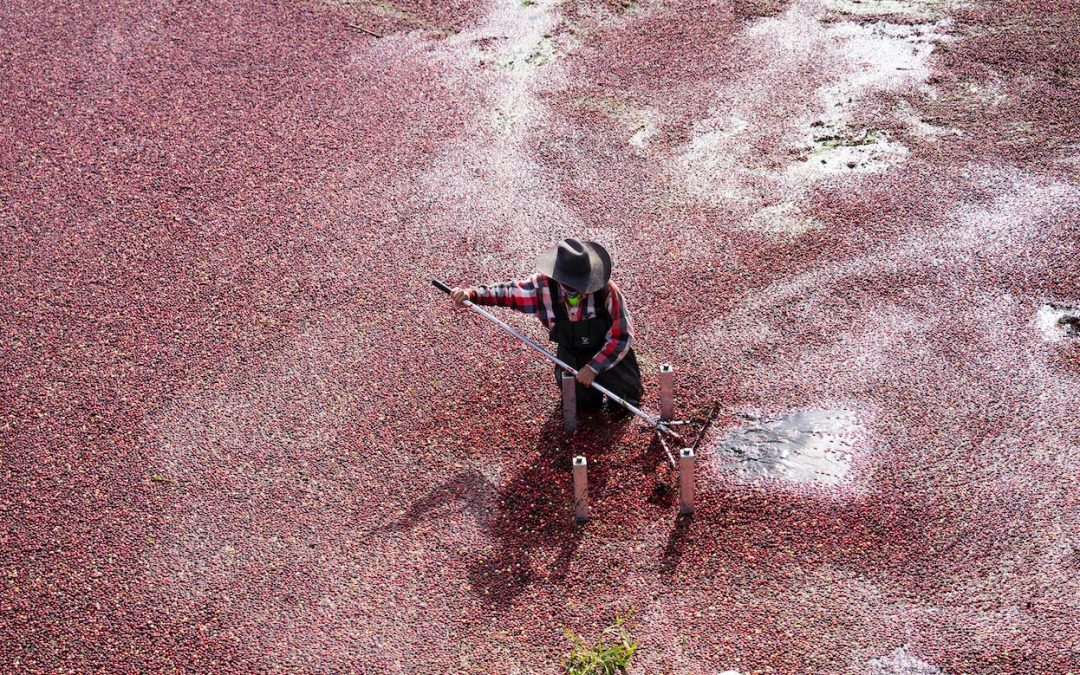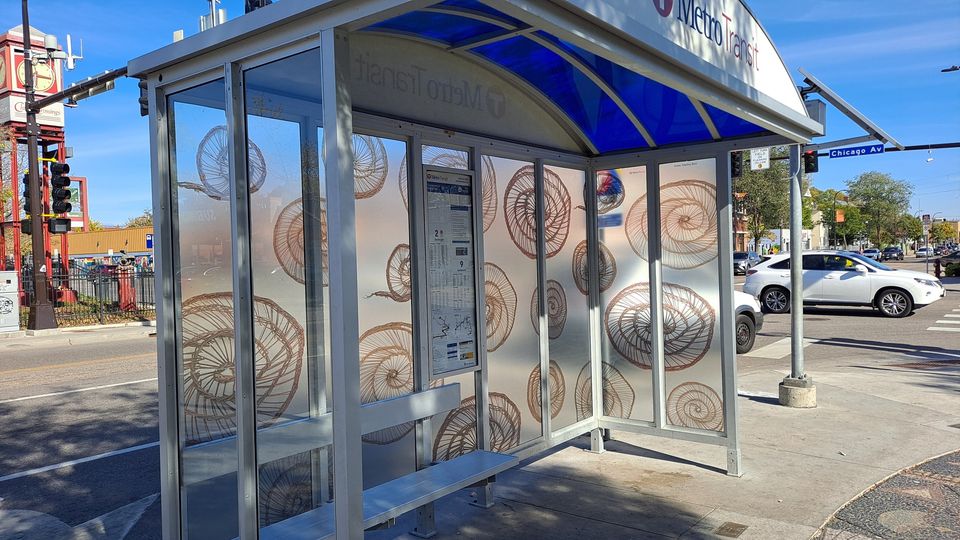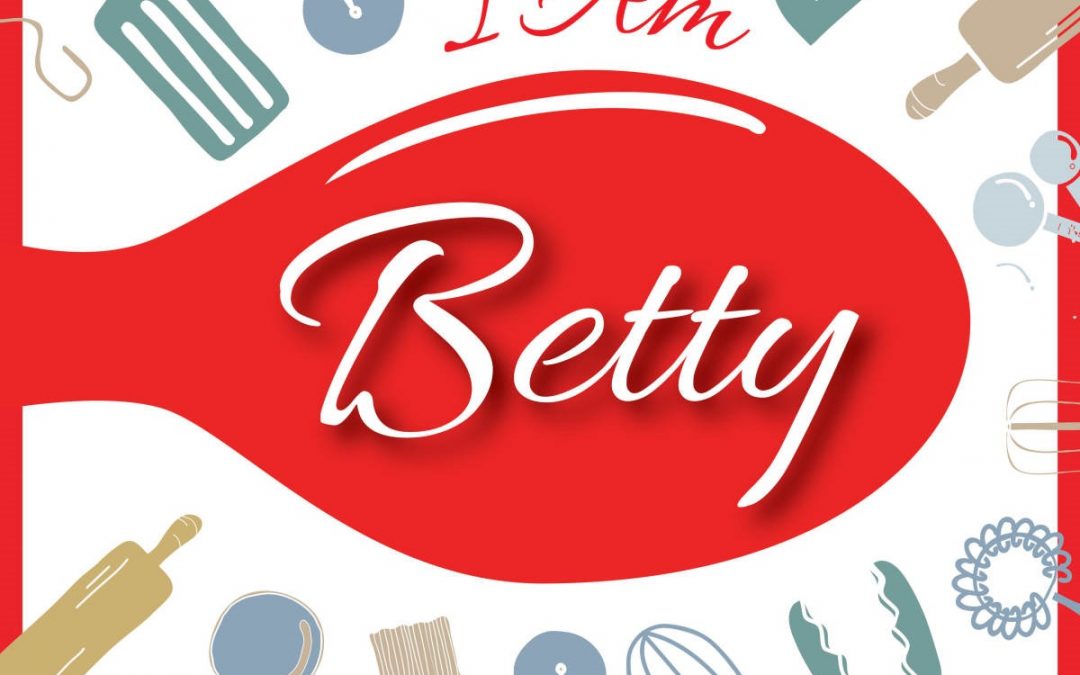








Bentleyville USA has become a holiday tradition at Bayfront Festival Park along Duluth’s harborfront.
…
…









Renée Jones Schneider, Star Tribune
…
It’s nature’s version of a ball pit. Or a chic Instagram backdrop.
But for Shannon Forster and her family, cranberry harvest is a job that doubles as a CrossFit-grade workout.
Forster and her uncle, wearing waders in knee-deep water, pull on each end of a long, floating boom that encircles a load of cranberries. Though each berry weighs hardly anything, dragging thousands of them across the bog requires plenty of strength.
And agility. Because on a chilly October morning, you don’t want to lose your footing.
“Everybody probably gets dunked once a year,” Shannon admitted.
The tart berries are a staple of the Thanksgiving table, yet tend to spend the rest of the year pushed to the back of the freezer or pantry — the fruit world’s crimson-hued stepchild.
But cranberries have deep cultural, economic and historic significance in the United States. Their high levels of health-promoting antioxidants have made them a valuable food and medicine for Indigenous people for centuries. The U.S. has long been the world’s largest grower of cranberries, which are among the few commercially important fruits native to North America.
Wisconsin produces more than half of the country’s crop. And though northern Minnesota’s peatlands have similar, cranberry-conducive conditions — sandy, acidic soil, abundant fresh water, a climate that’s both hot and cold — the Forsters are the state’s only commercial growers.
As they transition operations to the second generation, the Forsters continue to refine their growing and harvesting techniques so they can produce their niche crop as sustainably as possible. “We take a lot of pride in what we do,” Shannon said.
Renée Jones Schneider, Star Tribune
…
For more than two decades, Shannon’s parents, Randy and Billie Jo, have ridden the ups and downs of cultivating a specialty crop that’s temperature-sensitive and can be easily damaged by heavy equipment.
The Forsters bought their farm after a large East Coast cranberry grower had developed the bogs for growing the fruit, just as its price crashed. Now they’re training the next generation.
With both mom and dad working off the farm as truck drivers, 21-year-old Shannon has taken the reins as manager and her brother, Nathan, 15, is the primary farmhand, homeschooling so he can prioritize the family business.
“I always joke with him: You can’t be too smart, because you can’t take my job,” Shannon said. “You’re still my little brother, and I’m still your boss.”
Shannon, the youngest of the family’s three daughters, took advantage of postsecondary enrollment options during high school and earned an associate degree, knowing she wanted to focus on farming. During the growing season, she takes responsibility of the farm’s daily operations. And it’s all-hands-on-deck during harvest season.
Walking across one of the family’s soon-to-be-flooded fields, covered with a low, dense network of cranberry vines, Shannon said that the biggest misconception about cranberries is that they grow in water. The Forsters flood their 50 acres of berries several times a year, but only for a period of days.
Most of the time, the fields look dry as those underfoot, which contains hundreds of berries per square foot. The visible cranberries are bright red, while those beneath are pink or white. They’re all ready for harvest, Shannon explained, it’s just that the lighter colored ones don’t get as much sun exposure and tend to stay warmer. “To turn red, cranberries need sunlight and cold temperatures,” she said.
Similar to wild rice (which the Forsters also grow, along with soybeans, oats and wheat), commercially cultivated cranberries are grown in a series of small plots surrounded by dikes and canals to hold and transfer water.
The Forsters pump water between a reservoir and the cranberry and rice fields throughout the year, recycling as much of it as they can. “Both crops need water at different times, so there’s a ton of value in farming them together,” Shannon said. “But we’ve never heard of another farm that grows both cranberries and wild rice.”
In the spring, the fields are flooded for natural weed and pest control. During the growing season, the vines are irrigated to protect them from freezing or scorching temps. For weeks when the weather puts the cranberries at risk, the family works overnight shifts to ensure the irrigation system is operating properly. (The job involves traipsing around the fields in the dark to check the water lines for leaks, monitor temperatures and pick test berries to assess their condition.)
In the fall, the wet harvest technique used by the Forsters takes advantage of the air pockets inside cranberries; after the fields are flooded and vines agitated by machine, the berries float to the water’s surface. The berries are gathered, frozen and processed for juice, dried cranberries and sauce.
Cranberries sold fresh, which represent a small fraction of the country’s annual crop, are dry-harvested with the aid of small mechanical pickers. Then, during the winter, the fields are flooded once more to create a layer of ice that protects the perennial vines from severe cold.
While Shannon is concerned about more erratic weather — a few years ago, a surprise mid-June frost devastated the family’s crop — Midwest-grown cranberries haven’t experienced the degree of climate change as those in Massachusetts, which pioneered the industry and led production until the 1990s.
In recent years, East Coast growers have seen their crops suffer from higher summer temperatures, warmer winters and droughts. But because of the expensive infrastructure required for cranberry farming, there are few new growers joining the ranks.
…
Randy Forster has continuously refined the family’s farming practices over the years, which includes tinkering with specialized equipment, such as the cranberry harvester. It’s essentially a giant wet vac that sucks the cranberries up to a platform where a water bath separates the good, floating berries from any imperfect ones and plant material. The berries look like a red river, speckled with pink and white, as they ride the waterfall between the platform and the semitrailer parked below.
The Forsters share a small portion of their crop with local beverage makers, including Lakes and Legends Brewing Co. in Minneapolis, Buffalo Rock Winery in Buffalo, and Fargo-based Flannel Fizz soda. But they send most of their harvest to a receiving station in Tomah, Wis., run by Ocean Spray, the agricultural cooperative that counts the Forsters among its 700 farmer members.
The Forsters’ semitrailer slowly fills up with berries — by the hundreds, thousands, millions. When the little crimson orbs reach Tomah, and mix with berries from other farms, they’ll look indistinguishable from those grown elsewhere. But for now, they’re Minnesota’s finest.
Renée Jones Schneider, Star Tribune
…
By

Winter Wreath and Porch Pot Making
…
Discover the art of designing stunning, seasonal wreaths and pots that will adorn your home with warmth and beauty. Our workshops are a gateway to creating the perfect decorative piece for every season.
…
– Expert Instruction: Our experienced floral instructors will guide you through the process, sharing tips and techniques for creating beautiful wreaths.
– Seasonal Selection: Work with an array of seasonal greens, florals, and decorative elements that capture the essence of the time of year.
– Hands-On Creativity: Dive into the world of wreath design as you craft your very own personalized masterpiece.
– Personal Touch: Tailor your wreath or porch pot to your unique style and the specific season you’re celebrating.
– Heartwarming Atmosphere: Enjoy the camaraderie of fellow floral enthusiasts in a cozy and inviting setting.
Whether you’re looking to adorn your front door with a welcoming wreath, create a beautiful porch arrangement, or give the gift of handmade decor, our Workshop is the perfect choice.
…

…
Wreath Making Design Kit ($85) Level: Easy – Includes farm fresh flowers, our creative guide to DIY design, oasis floral foam, and a small reusable vase.
Porch Pot Design Kit ($135) Level: Intermediate – Includes twice as many farm fresh flowers, design guidance from our Master Florist, oasis floral foam, and a large ceramic vase.
*UPGRADE: VIP packages allow guests to arrive 20 minutes early for best pick of the flower bar, one-on-one attention from our Floral Design Master, and a complimentary drink on us.
Join us for an enjoyable and creative experience that combines natural beauty, seasonal charm, and the joy of crafting something truly special. Reserve your spot today and let your creativity flourish!
…

…
Winter Wreath and Porch Pot Making at Hewing Hotel
$85.00 – $135.00
…
Bentleyville City of Lights Festival, Holiday Helicopter Tours – Duluth, MN

…

…

…
…
The holiday lights festival is back and better than ever! The 2023 attractions include interactive bike-powered tree lights, mazes, a giant slide, zip lines, “Glitter Critters,” a “Penguin Playground,” and more. Make sure to bring your camera to the family-friendly event, as dazzling photo opps are around every corner.

…
Open now and runnning on select dates through Sunday, December 31st.
…
…
Pioneer Press marks 175th anniversary with commemorative photo book!

![]()
…
…
…
Betty Crocker has helped shape America’s homes and appetites for over a century.Surprising to many, she was not a real person! As a radio and television personality, a letter-writing confidante, and a relatable icon, “Betty” has been a subject of both admiration and scorn as multiple generations have grappled with questions of women’s role in American society. You’ll catch yourself humming the memorable music from this world-premiere production and be inspired to go home to bake something new!
…
Wednesday, November 22nd – Saturday, December 23rd
…
30 East 10th Street
St Paul, MN
…

…
Artful Living: Minneapolis Artists Bring John Biggers’ Iconic Northside Mural Back to Life
doitinnorth shop/share gallery
Foam Glow Sticks, Christmas Glow Party Supplies with 3Modes Colorful Flashing